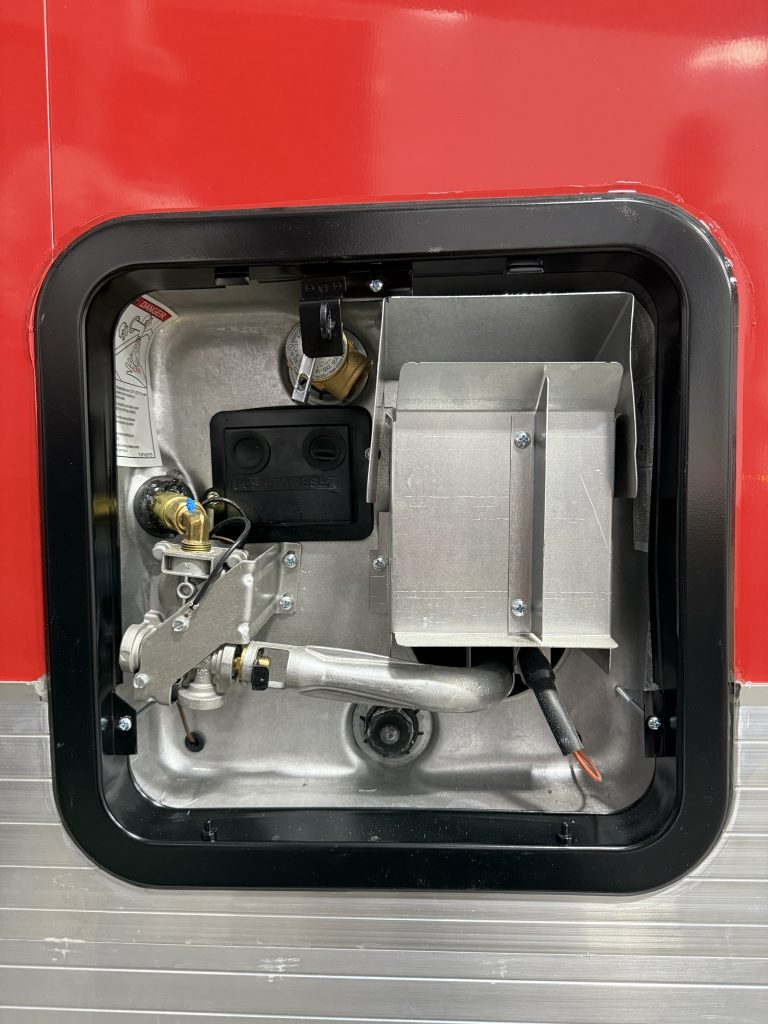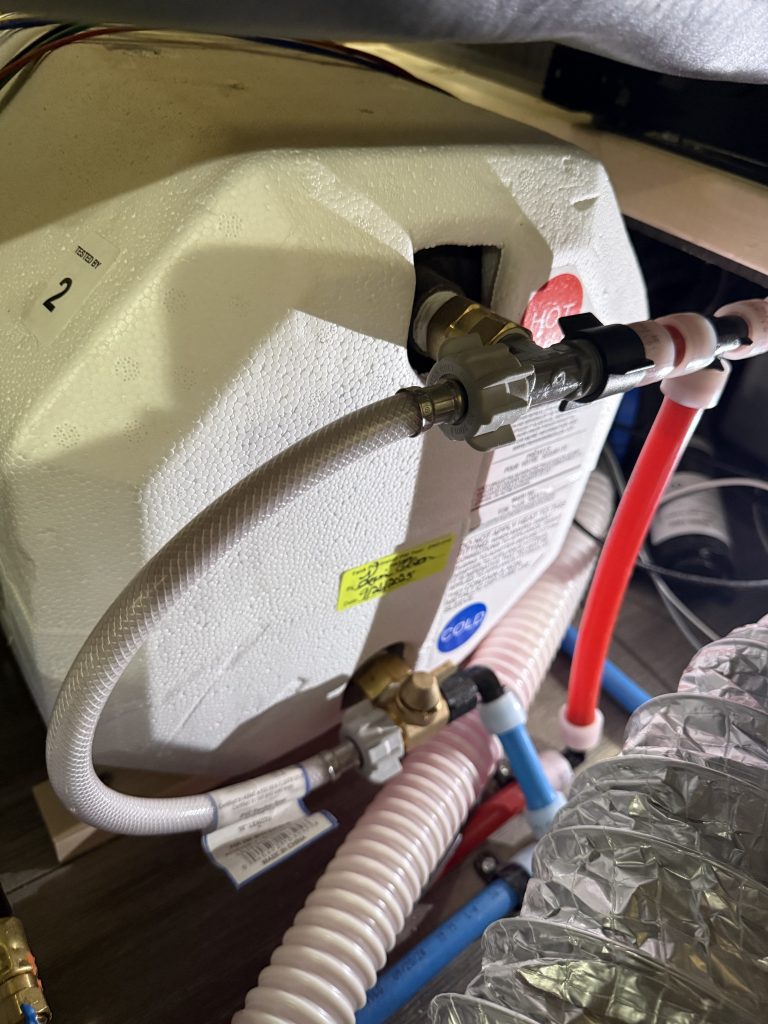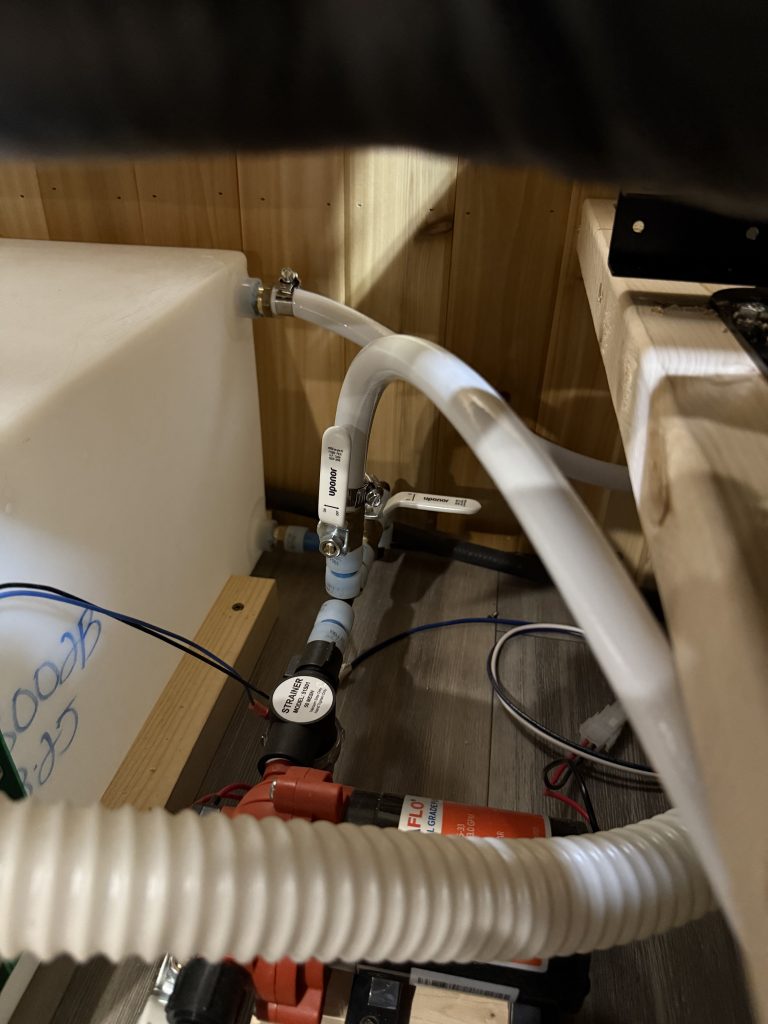As temperatures drop and ice fishing season approaches, it is essential to properly winterize your Yetti Fish House, especially if it is equipped with a water system. Winterizing protects your plumbing components from freezing, cracking, and costly damage as you prepare for cold weather use.
In this video, Brady will show you the steps you should take to safely winterize your Yetti. Please note this video was made for MY2022 and prior houses.
Drain All Holding Tanks
Begin by draining your black water, gray water, and freshwater holding tanks completely. This removes the bulk of water from your system and reduces the risk of freezing, Make sure all valves are fully open and allow time for complete drainage.
Drain the Water Heater:
Locate the water heater access panel on the exterior driver’s side of your Yetti Fish House. Before draining turn off the water heater and allow it to cool. Open a faucet inside the unit to relieve pressure and allow residual water to escape. This helps prevent airlocks and ensures a smoother drain.
Next, remove the drain plug from the bottom left-hand corner of the water heater. For MY2023 and newer models use a 1 1/8″ socket. For MY2022 and older models use a 15/16″ socket.
Once the tank is fully drained, reinstall the plug carefully. Avoid overtightening to prevent damage to the threads or fittings.

Bypass the Water Heater
Inside your Yetti, locate the water heater and turn off the bypass valves to prevent RV antifreeze from entering the water heater.
For MY2023 and newer models turn the cold water valve parallel with the water line to bypass the heater.
For MY2022 and older models turn off the cold water feed and hot water outlet, the blue and red pipes, and turn on the valve where the red and blue pipes meet, it should be parallel with the pipes.
This ensures antifreeze flows only though the water lines and not into the heater tank.

Load RV Antifreeze into the Water System
Using non-toxic RV antifreeze is critical for protecting your plumbing system during freezing conditions. Follow these steps to circulate antifreeze through your Yetti’s water lines:
Locate your freshwater tank. Do not pour antifreeze directly into the tank.
Close the drain valve and freshwater tank valve.
Open the valve connected to your antifreeze intake line.
Insert the hose into a bottle of RV antifreeze.
Turn on the water pump.
At the kitchen sink, run the hot water valve until antifreeze flows steadily. Repeat with the cold water valve.
Repeat this process for all water fixtures including sinks, shower, and toilet.
Turn off the water pump.
Remove the hose from the antifreeze bottle and store it back in the cabinet.
This process ensures that all water lines are filled with antifreeze, protecting them from freezing and cracking.

Why Winterizing Your Yetti Matters
Yetti Fish Houses are built for rugged winter conditions, but water system require extra care. Freezing temperatures can cause water to expand inside pipes, tanks, and heaters, leading to burst lines, damaged fittings, and system failure. Proper winterization prevents costly repairs, protects your investment, maintains warranty coverage and ensures your Yetti is ready for use when you need it.
Failure to properly maintain and service your Voyager equipment may result in personal injury and may void any manufacturer warranties. Please contact your local dealer with any service, maintenance, or warranty questions.
